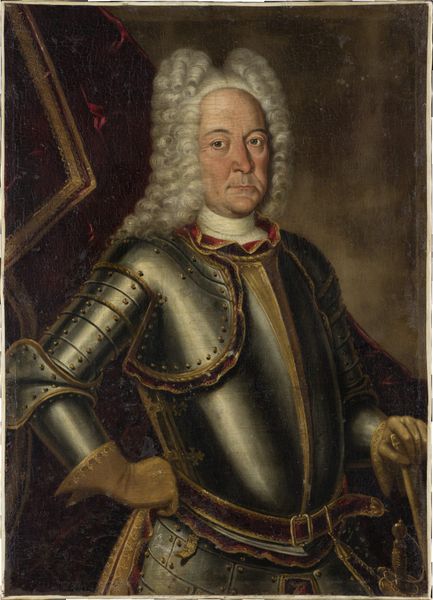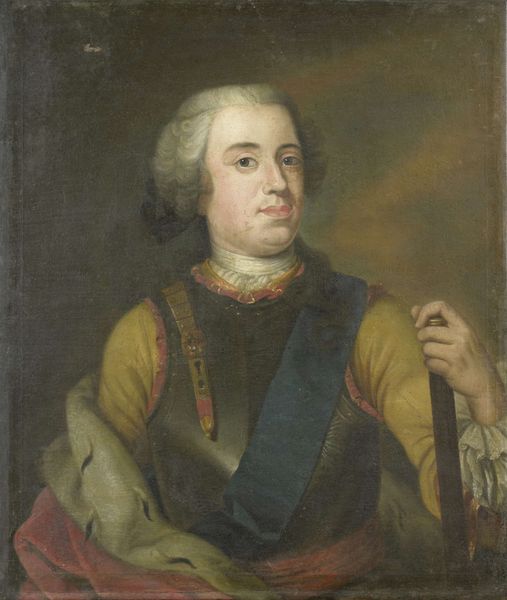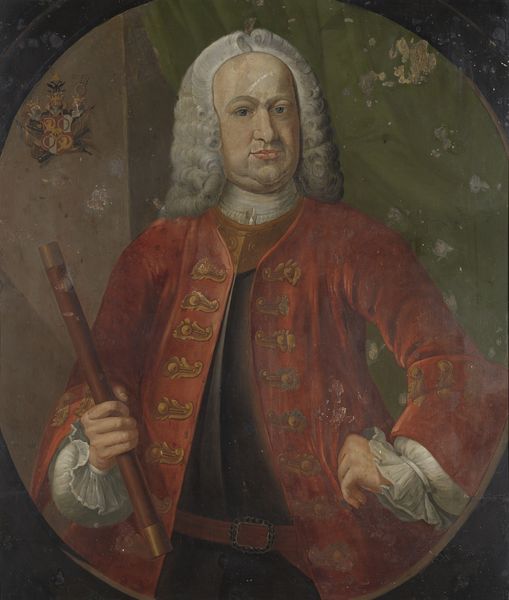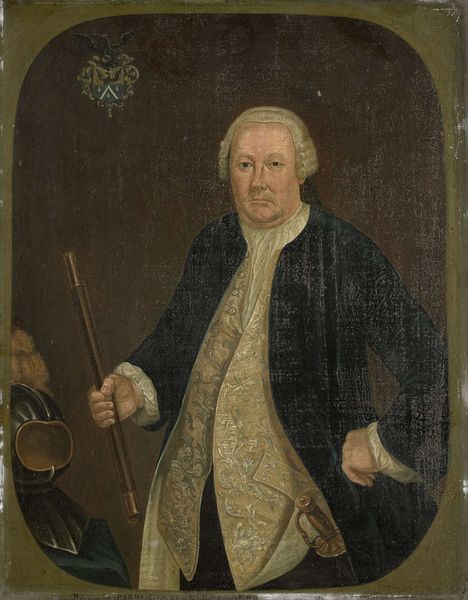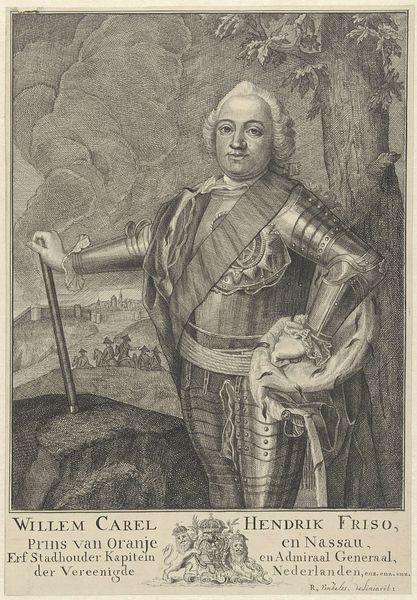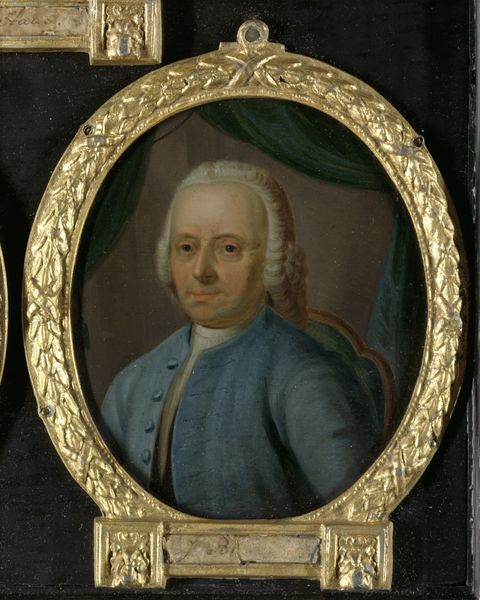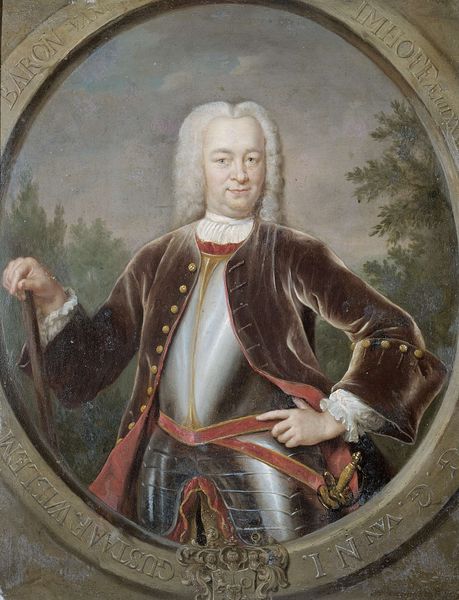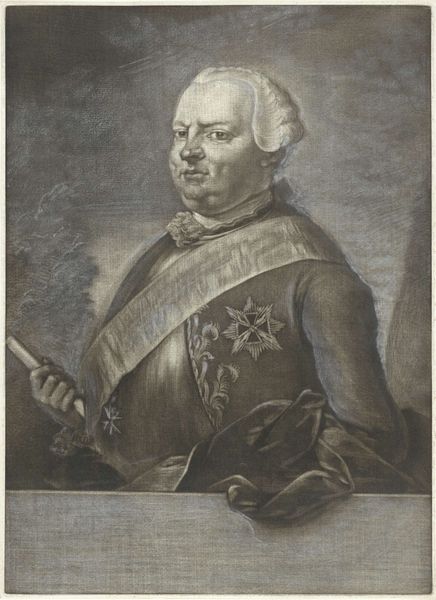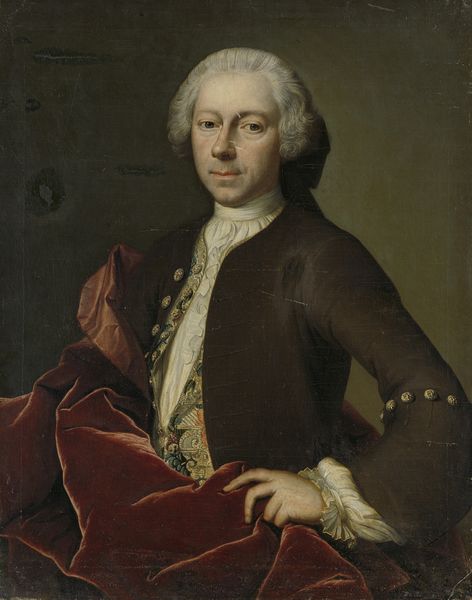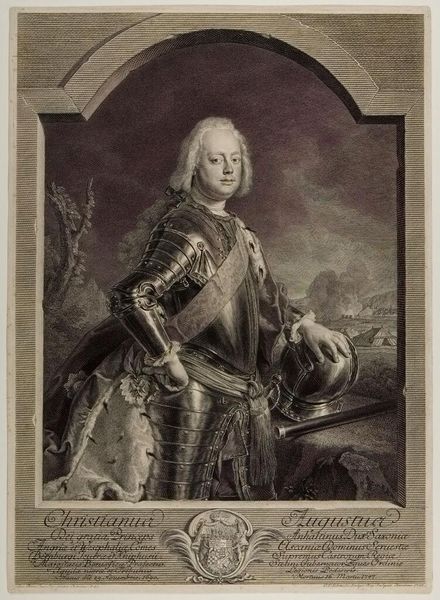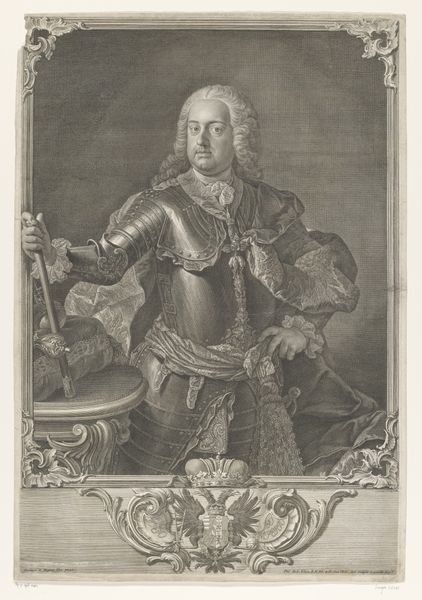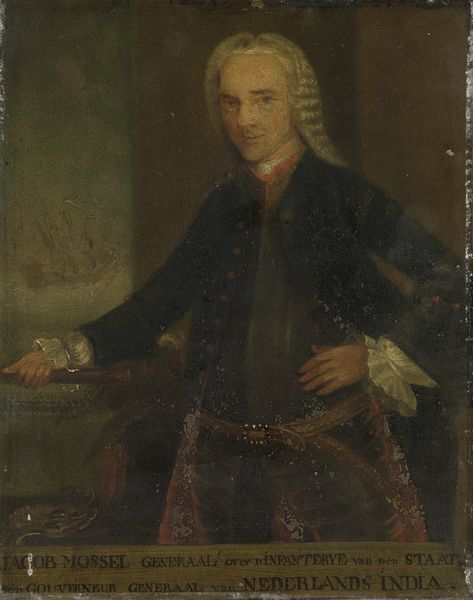
Portrait of Johannes Thedens, Governor-General of the Dutch East India Company 1742
0:00
0:00
#
character portrait
#
portrait
#
portrait reference
#
portrait head and shoulder
#
portrait drawing
#
facial portrait
#
portrait art
#
fine art portrait
#
celebrity portrait
#
digital portrait
Dimensions: height 35 cm, width 24 cm, depth 3.6 cm
Copyright: Rijks Museum: Open Domain
Curator: Good morning. Today, we're looking at Jacobus Oliphant's portrait of Johannes Thedens, painted in 1742. Thedens was a Governor-General of the Dutch East India Company. Editor: Right, Governor-General. He doesn't exactly *scream* that kind of power though, does he? He looks rather…contemplative, almost melancholic, despite all the pomp. And what's with that staff he's holding? It looks like a prop from a low-budget historical drama. Curator: Well, let's not forget the visual language of portraiture in the 18th century. Think about the audience it was intended for. It was not always just about capturing likeness but also conveying status and authority, though perhaps Oliphant has softened those aspects here. The setting includes classically inspired columns in the background, as well as luxurious robes. It projects status, certainly, but subtly, so maybe you’re on to something. Editor: Maybe, maybe not. It's all so carefully constructed, isn't it? He's holding that staff, yes, but also resting his other hand rather elegantly on that velvety cushion at his side, it feels theatrical, almost like he's playing the part of 'Governor-General', but without complete conviction. Curator: It’s fascinating how you interpret the ambivalence! The portrait, through its display in governmental buildings and private residences, really functioned to visually reinforce the Company’s authority. Thedens' thoughtful gaze in this portrait could be an attempt to suggest he possesses the wisdom and care required for leadership. Also, he has a golden fastener at the bottom of his trousers. I bet that it costs a lot! Editor: Fasteners, eh? Another signifier! But back to this contemplative look. I find myself wondering what burdens he carried. Was it all spices and silk routes, or did he grapple with ethical quandaries about colonial power, trade or labor exploitation, even if briefly, between sips of his favorite chai. It has the look of internal division somehow. Curator: I suspect such internal reflections, or overt signs of turmoil, would not have been a sanctioned aspect of official portraiture in that era. Although perhaps the painting gestures towards such things through softer or less imposing presentations. It makes one wonder what other personal, non-sanctioned readings took place. Editor: Precisely. Art isn't a simple mirror, but more of a distorted one, where shadows hint at things unsaid. Thank you for shining a little light onto all the context surrounding the image. It certainly puts my emotional projections into, er, historical context. Curator: Indeed. Every painting is like a time capsule holding a range of narratives.
Comments
No comments
Be the first to comment and join the conversation on the ultimate creative platform.
